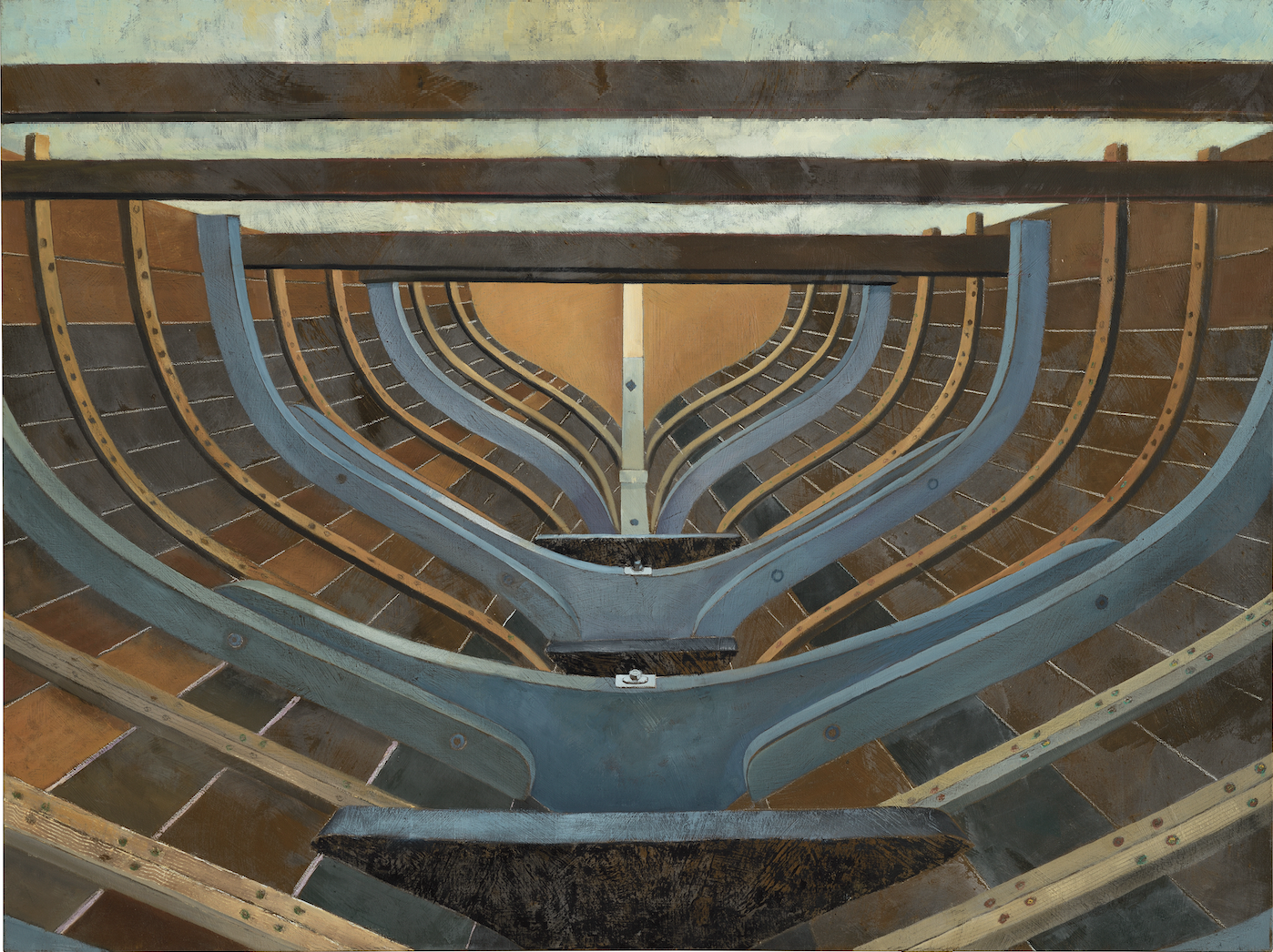- Home » Exhibition » ONLINE EXHIBITION: James Dodds ‘The Work of Human Hands’

23 October – 29 November
‘Of all things, living or lifeless, upon this strange earth, there is but one which, having reached the mid-term of appointed human endurance on it, I still regard with unmitigated amazement…Flowers open, and stars rise, and it seems to me they could have done no less… But one object there is still, which I never pass without the renewed wonder of childhood, and that is the bow of a Boat.’ John Ruskin
Like Dodds, Ruskin recognized the perfection of a boat’s shape, the life-giving union of form and function. But a boat’s bow is more than just shape. ‘No other work of human hands,’ continued Ruskin, ‘ever gained so much.’
We are delighted to welcome back James Dodds for at solo exhibition in he barn gallery. Inspired by small boats from the South West, James Dodds masterfully represents this subject in both paintings and limited edition linocut prints. His paintings go beyond retracing the shipwright’s logic. Rich in colour, tone and texture, they move beyond the literal and evoke sailing’s mythic and historic dimensions. Ethereal in light and tone, paintings of restored boats evoke a lifetime at sea, unearthing the layers of memory that shroud every vessel.
New work includes one of the largest paintings he has ever undertaken, a Falmouth pilot cutter and at over seven metres wide it is a striking abstract artwork of deep blue tones.
Initially becoming a shipwright’s apprentice James later studied painting at Chelsea College of Art and the Royal College of Art in London. His early career in boatbuilding left a lasting impression on him and can still be seen influencing his work today. Dodds said, ‘With that first boat, it felt as if I was building it on the canvas. The two sides of me, the builder and the artist, one focused on art and colour, the other on practicalities’.
The way naval architect plans are scaled up is reflected in his work. Creating a white grid to provide an accurate guide, he begins to paint the plywood board or carve into lino. These grids can be seen in the finished pieces giving the viewer an insight into the methods and influences behind the work and giving them a striking and unique appearance.